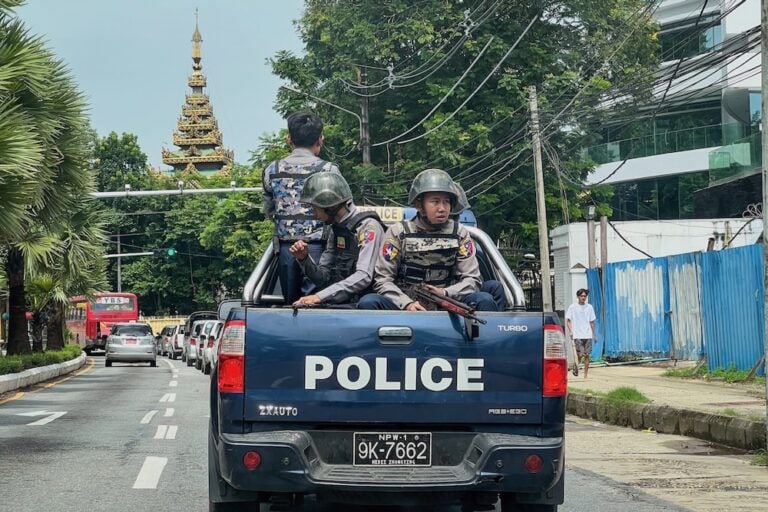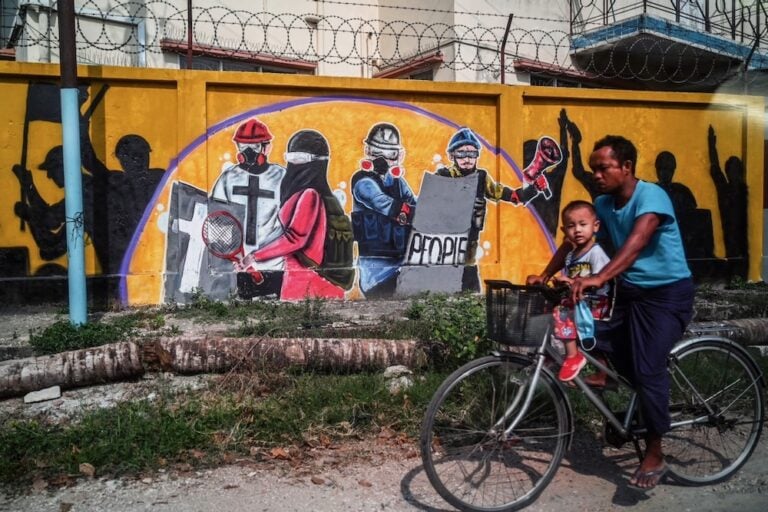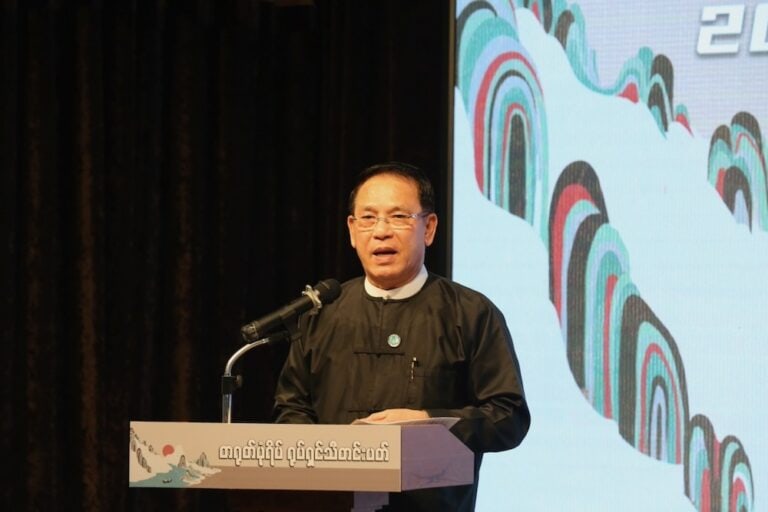(Mizzima/IFEX) – The following is a statement from Mizzima News, an interim member of IFEX: Fear of censors stops local media from covering protests in Burma While the international media and newspapers have run front page stories on the unrest in Burma, local newspapers and journals have been severely handicapped in covering the protests because […]
(Mizzima/IFEX) – The following is a statement from Mizzima News, an interim member of IFEX:
Fear of censors stops local media from covering protests in Burma
While the international media and newspapers have run front page stories on the unrest in Burma, local newspapers and journals have been severely handicapped in covering the protests because of official censorship. The Burmese press scrutiny board hangs like a Damocles’ sword over the Burmese media.
Despite witnessing the protests and taking photographs, producers of Rangoon-based journals said they had failed to include even a single story in their newspapers, as they have previously faced censorship by the press scrutiny and registration division of the Burmese Information Ministry.
“We all have to go through the censorship board. And if we submit our draft they will reject it or suspend it. So, nobody wants to bear the burden, as we will not get past the censors,” U Hein Latt, editor of a Rangoon-based “Popular Journal”, told Mizzima.
Reporters in Rangoon said that, although they witnessed the events unfolding before them and had taken visuals, the journals are not running stories. So the gathered information has remained as personal records.
“I was there at the demonstrations and as a journalist I was interested and had collected both news and photographs. But since they were not used they will remain as personal records,” said a Rangoon-based reporter, who requested not to be named.
Consternation among the general population grew following the sudden hike in fuel prices on 15 August 2007. This eventually triggered protest marches on 19 August. These were followed by a week of sporadic demonstrations in Rangoon, which spread to other parts of Burma.
The Burmese military junta met the peoples’ protest with a brutal crackdown conducted by the junta’s civilian organisations – the Union Solidarity and Development Association (USDA) and Swan Arrshin.
The protest, probably the largest in a decade, made Burma watchers recall the country’s last big public demonstrations in 1988, which the junta crushed mercilessly, killing thousands of students, monks, and civilians.
The current protests have attracted the attention of the regional and international media with newspapers in the United States running stories, editorials, opinion pieces and commentaries.
While the local media failed to cover the events, the Burmese junta’s mouthpiece ran articles that accused and condemned the 13 detained 88 generation student leaders and the National League for Democracy for instigating public unrest and riots.
However, the junta has not given any official notice to the local press to restrict them from running stories on the protest.
“As far as I know, there is no official notice from the authorities not to run protest stories. But it is common sense that has guided the journal editors and producers. Some reporters went to witness the protests but did not write stories,” said U Hein Latt.
However, pro-junta thugs, who cracked down on peaceful protesters, did not distinguish between reporters and protestors and attacked journalists.
A foreign correspondent based in Rangoon said, “To dispatch the stories as regional news, I could not afford to be inaccurate, so I went to the protests. But I had to flee to escape beatings.”
Similarly, Rangoon-based reporters and foreign correspondents are being harassed while covering the demonstrations. Pro-junta mobs reportedly seized cameras and beat reporters.
“When the USDA saw us taking photographs, they shouted at us and said ‘beat them’, so we had to run away,” said a reporter, who requested not to be named.
A Rangoon-based senior foreign correspondent told Mizzima that in the current situation, the restrictions on the media are worse than in 1988.
“In 1988 there were restrictions, but it was not this bad and there was no physical harassment. Now, there are a lot of restrictions on the press and reporters. This is worse,” he added.


